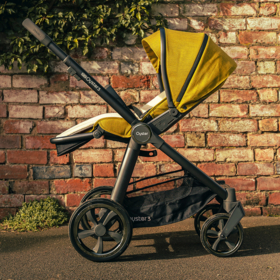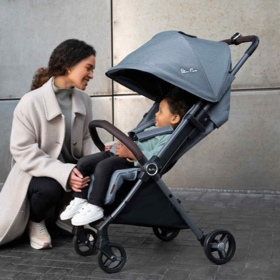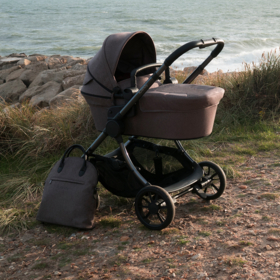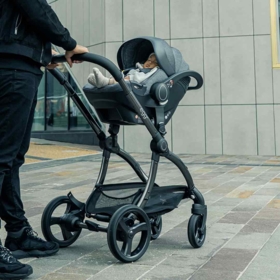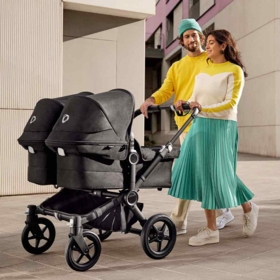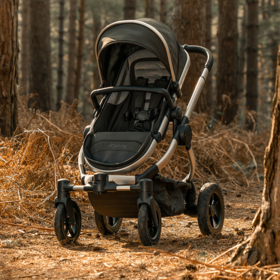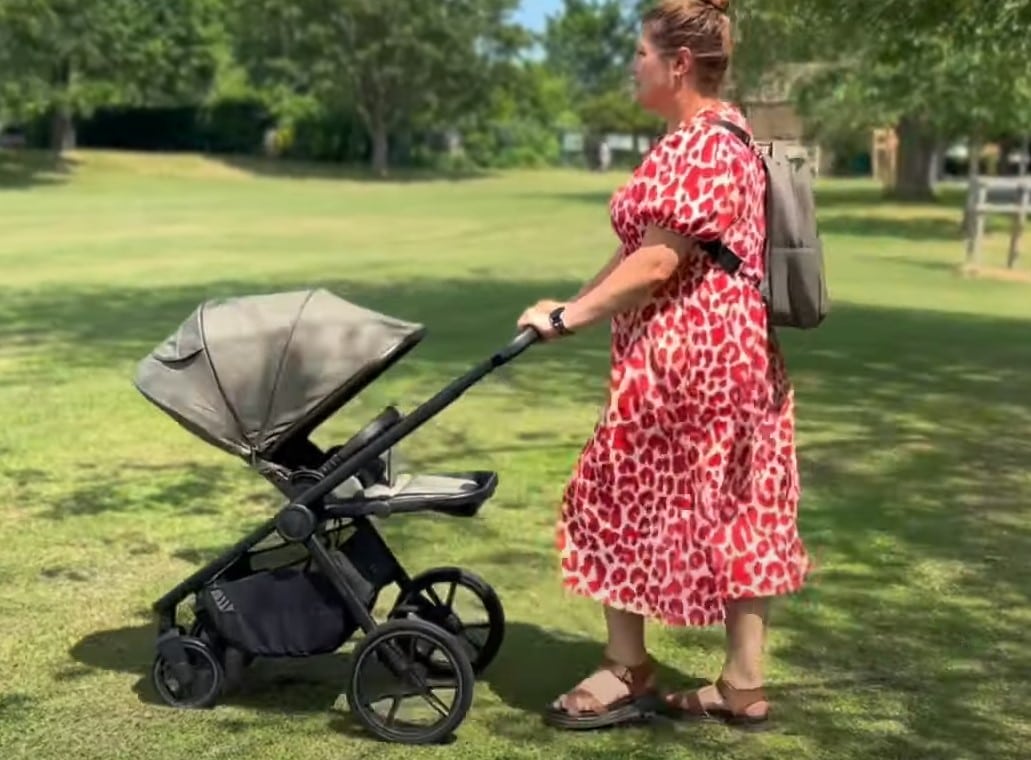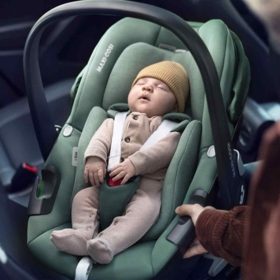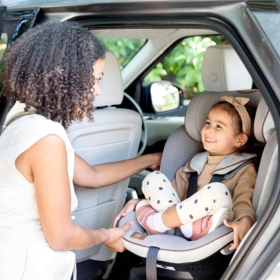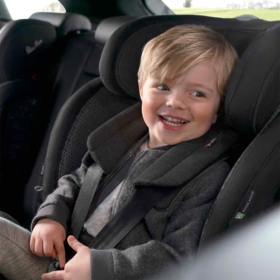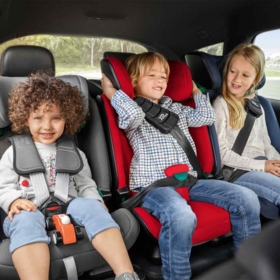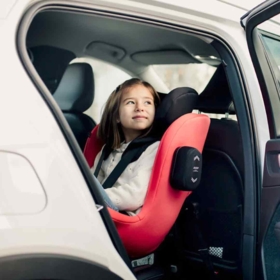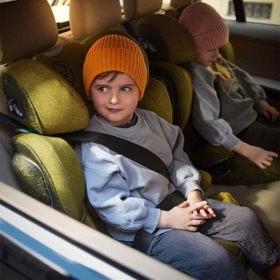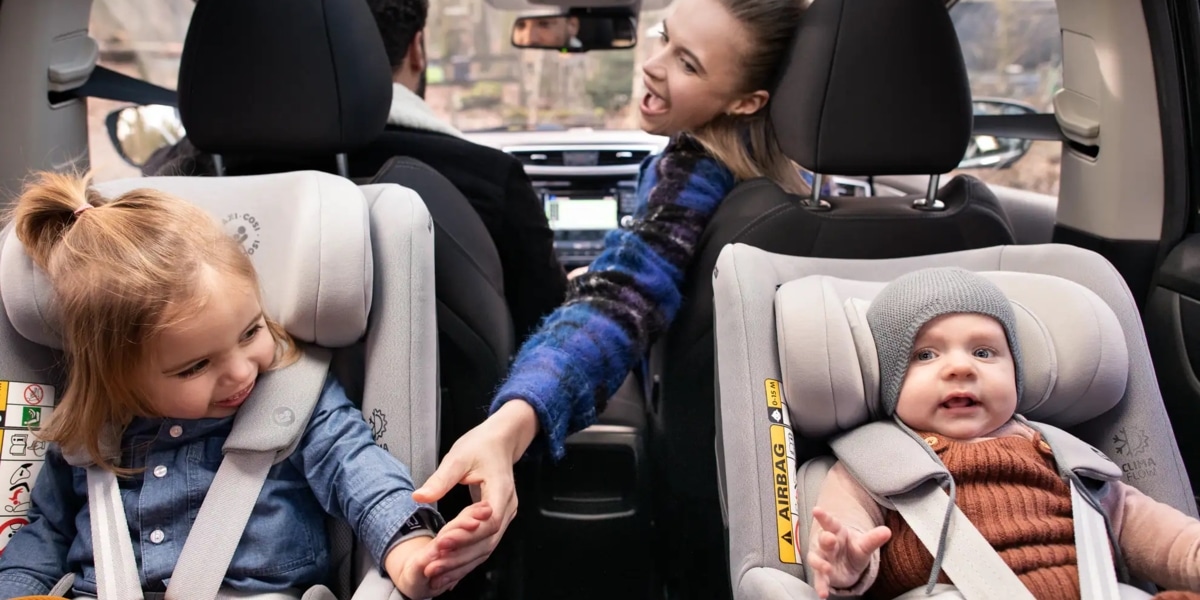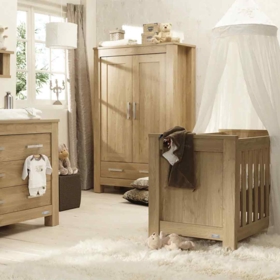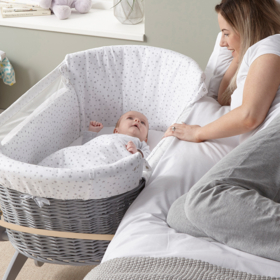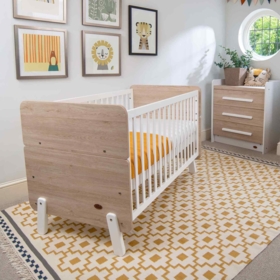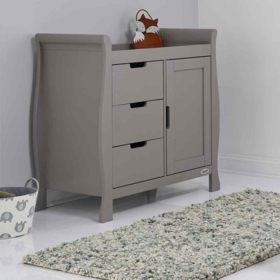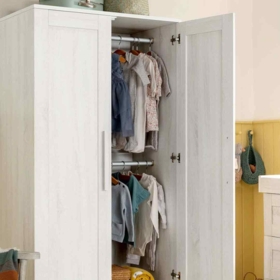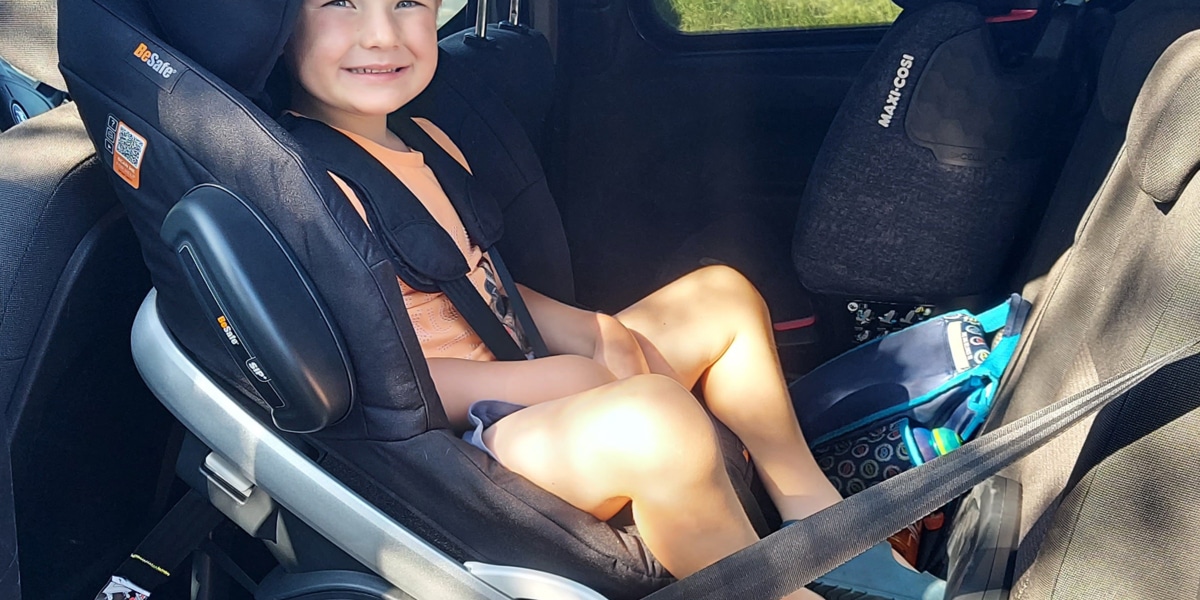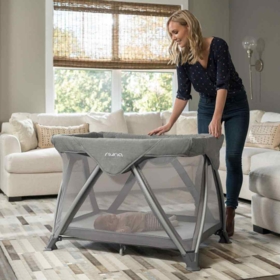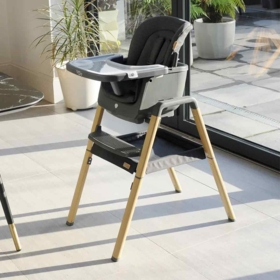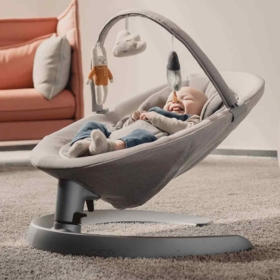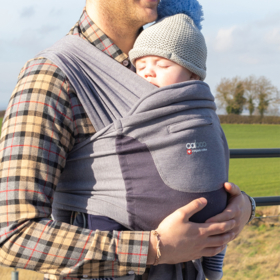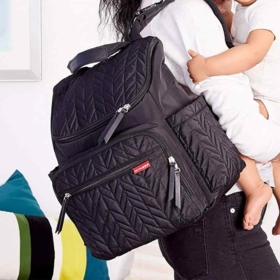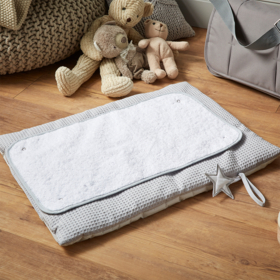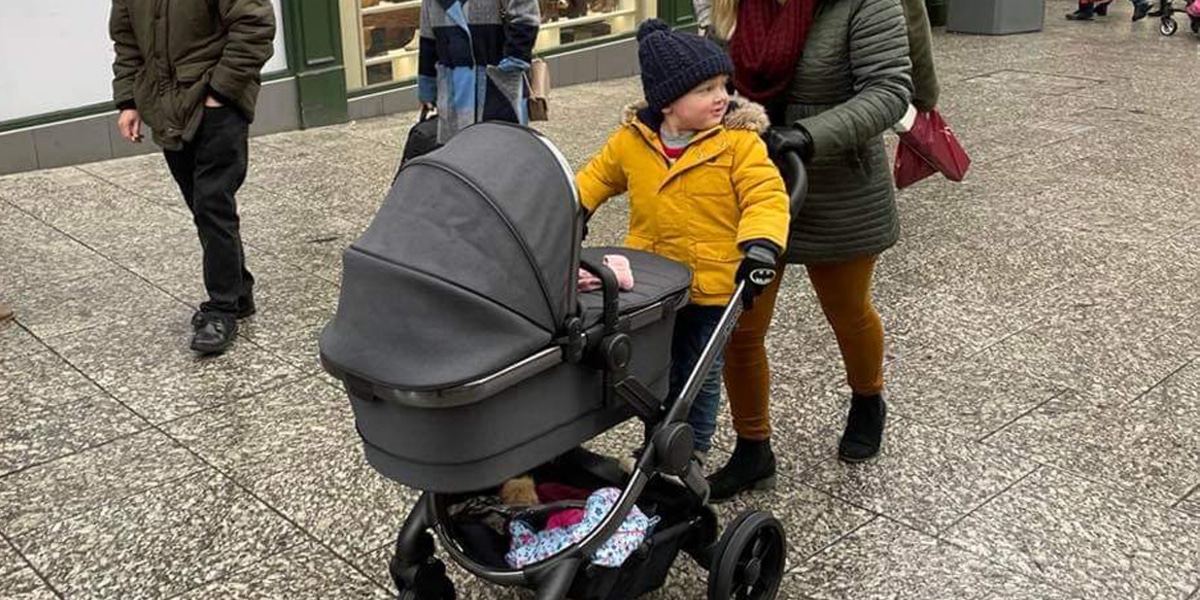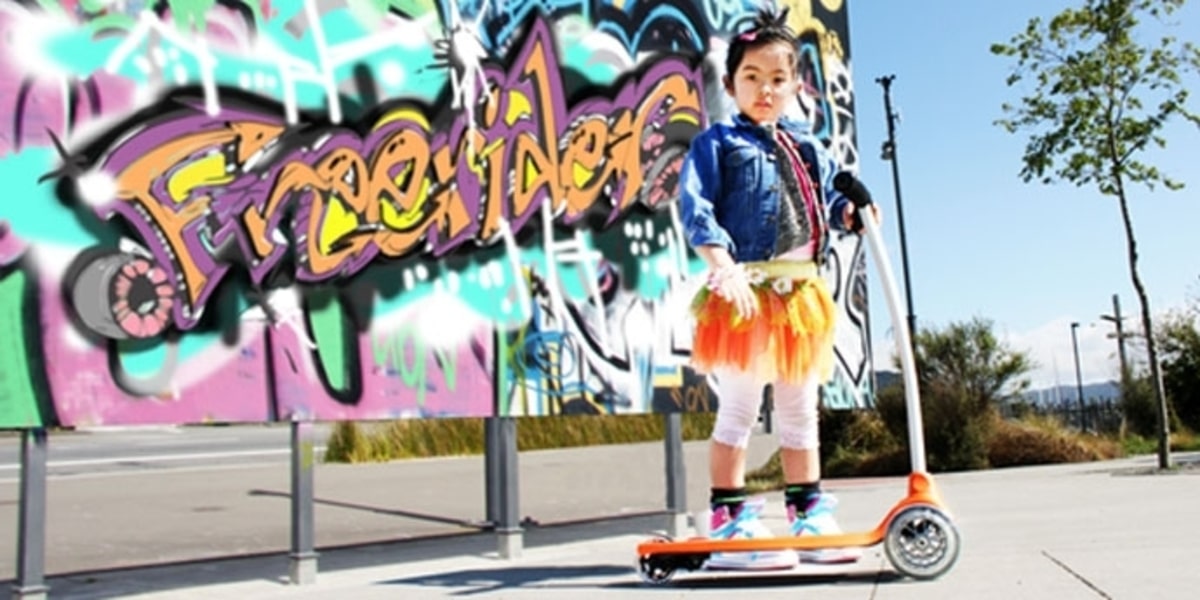Quick Summary: The Mountain Buggy Freerider is a unique and fun idea for older kids that still need the occasional ride, and as it has multiple uses, that's always a plus. It won't be a fight to get them in a safe place when in a busy area.
Whats good?
- Easy to attach
- Connectors available for lots of different pushchairs
- Fun for the child to use
Whats not so good?
- Can't recline the pushchair seat when using Freerider
- Not much room at the back for the adult's stride
- Tilt steering in scooter mode can be quite difficult for younger children
Introduction
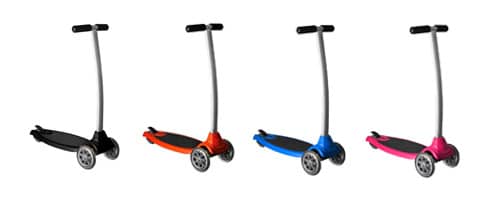
In addition to their all-terrain pushchairs, Mountain Buggy offer a host of accessories to complement their range. One of those accessories is the Freerider, which is a ride-on board-come-scooter for older toddlers. We have been testing the scooter with a Mountain Buggy Urban Jungle and my 3 year old, 16kg son.
Material
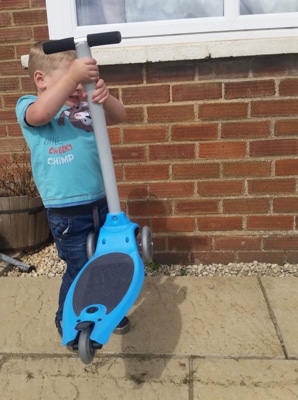
The only setup required before using the Freerider is pushing the handle into the board. Once, that's done, your child is ready to go for a ride.
Made from aluminium and plastic, with skater-style wheels and weighing only 2.2kg, it's really light to transport. Our three-year-old tester can lift it easily and so it's effortless to get in and out of the car. The Freerider board is covered with a rough textured grip pad, so prevents any slipping. We haven't experienced any accidents, but be warned, it is rough, so it will hurt if you fall or scrape on it!
The measurements of the Freerider make it perfectly sized for your older toddler, right up to a maximum weight of 20kg. With a handlebar height of 68cm, width of 21cm and length of 56cm, an average size two-year-old could start to use it comfortably.
Fit
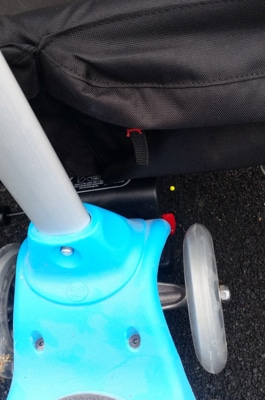
When you purchase the additional Connectors, it is an easy job to transition the Freerider from a scooter to a ride-on board. We have the Mountain Buggy Urban Jungle here at Pushchair Expert, so needed the Connector 1, they also offer other connectors to fit different make pushchairs. The connector is a small black box that attaches to the rear tube of the pushchair with four screws and bolts - an Allen key is provided to tighten it. It can be left fitted to the pushchair and you can still fold with it on.
It didn't take long to attach the connector to the rear chassis of the Urban Jungle, and because of the design, you can slide it and fit it anywhere along the tube length. The diagram instructions are clear, though we would have preferred to also have written instructions as well. Mountain Buggy do offer handy instruction videos on their website should you need a pointer in the right direction.
Once fitted, the Freerider attaches to the connector with two pins that slide into the holes. There is a red button on each side and you can press either to release the catch, allowing the Freerider to be attached or removed. We found this to be a smooth action that worked perfectly each time. Before attaching to your pushchair, the Freerider's wheels need to be switched around from fixed to swivel - the rear wheel just pulls out to make it higher and then needs swivelling around. The front wheels are suspended above the ground, making the rear swivel wheel the only one on the ground.
Use
As a ride-on board
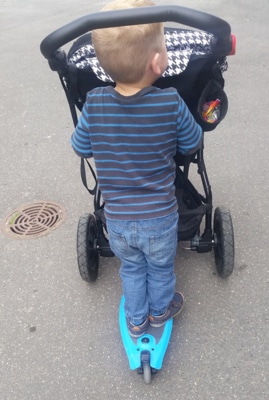
Unlike other ride-on boards available, the Freerider features a handlebar which clips in and out of the board. This is great for riders, as they have something to hold on to, rather than having to rely on balance or the pushchair. Holding on to the Freerider handle, the tester's head was just inside the handlebar of the Urban Jungle and felt nice and secure. The board stays stable over smooth ground and there is minimal movement. It follows the pushchair smoothly and didn't add too much extra weight to the push. It was even agile enough to get up and down kerbs without a struggle.
Because the board is in a scooter style, it obviously sticks out further from the back of a pushchair than the traditional style. If you have a longer stride, it does mean that you will need to try and adjust the connector further to the left or right (if your pushchair shape allows this) so that you can walk to one side while pushing.
For times when you are not using the freerider, the handlebar can be removed from the board to allow you to flip it up out of your way. There's a handy toggle at the rear of the board so that you can fasten it to your pushchair. You don't even have to worry about transporting the handlebar as it slides underneath the wheels and is held in place.
If the baby or child that is travelling in your pushchair needs to nap, you are unable to recline their seat in world facing position, due to the handlebar of the Freerider. This could be a problem for parents of younger children if parent-facing isn't an option.
As a scooter
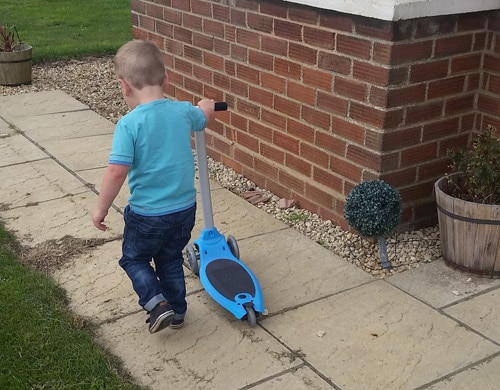
As the handlebar and front wheel are stationary, the child has to rely on ‘truck steering' like a skateboard to steer the Freerider. A younger toddler may struggle with this concept, 3-year-old Edward was caught stopping to adjust his alignment, rather than doing it on the move. We would have preferred the handlebar to control the steering for better manoeuvrability as a scooter - as the front wheels are off the ground when using it as a ride-on board, it wouldn't have affected the use there.
To enable them to control their speed in scooter mode, the Freerider features a step on brake attached to the rear wheel. If your child is used to a scooter, this should be second nature to operate, but will take some coaching for little ones.
It is worth considering the Freerider as a standalone scooter. Because it attaches to the pushchair it means you get mileage out of it early on, then as a standalone and once again super useful if you have another child. For the price, it works out well compared to some scooters and its durable material and bold design should mean it lasts.
Conclusion
The Mountain Buggy Freerider is a unique and fun idea for older kids that still need the occasional ride, and as it has multiple uses, that's always a plus. It won't be a fight to get them in a safe place when in a busy area - Edward was always asking to jump on.
Although it adds flexibility to your pushchair, and allows a second child to come along for the ride, there are a couple of issues that could cause problems for parents. The handlebar is a great idea and helps to keep the child stable, but it does limit the use of your pushchair and its capability of catering for a sleeping child. Most of Mountain Buggy's pushchairs are world facing, so you can't even get away with switching the seat around. We would also like to see the Freerider have better steering when in scooter mode. It's a must for younger children, who could struggle as it is.
We think that as a ride-on board, it works very well and will encourage reluctant children to take a ride as it looks ‘grown up'. Taller parents may struggle to stride behind the board so will have to walk to the side.
